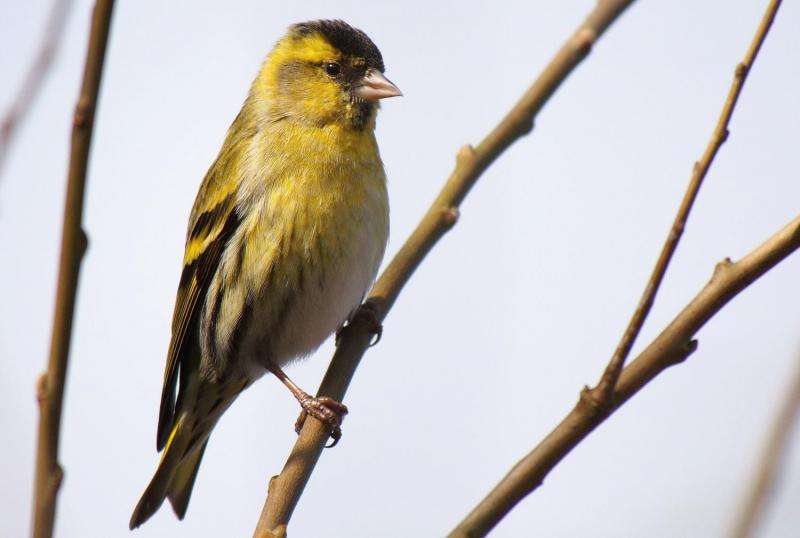Small birds prefer flying in company

Until now, scientists had observed that some large birds are sociable amongst each other. However, a new study has confirmed that this unique characteristic can also be seen among smaller birds such as the Eurasian siskin, a bird which is able to form bonds that last for a number of years. This intimacy may favour reproduction in addition to facilitating the process of adjusting to a new place.
The sociability of swans, geese and birds of the crow family has been studied and is well understood by scientists. These are large birds that tend to form stable, long-lasting bonds. This peculiarity, however, had not been observed in smaller birds such as the Eurasian siskin (Carduelis spinus). A study published in Bird Study reveals that this species has a tendency to travel long distances in groups over the course of several years.
The researchers had discovered that female Eurasian siskins in captivity prefer to mate with males that they know. Nevertheless, the investigators still needed to prove that these birds, when out in nature, live together for periods of time long enough to interact and to get to know each other.
"In this study we show how the Eurasian siskin is able to form stable group relationships lasting for periods of several years in addition to travelling in each other's company over distances spanning more than 1,000 km," says Juan Carlos Senar, lead author of this study and a scientist at the museum.
The research team used data from the European Union for Bird Ringing (EURING), the European institution in charge of banding and tracking birds, in order to examine the data recorded on 42,707 Eurasian siskins between 1907 and 2011. For greater accuracy, the experts limited their study to those birds that had travelled distances greater than 50 km from the place where they had been banded—a distance that exceeds the maximum number of kilometres that these birds tend to travel in a single day (10-40 km).
The findings demonstrated that Eurasian siskins can remain together in the same group for up to four years. The results also showed that they can travel with other individuals for distances up to 1,300 km. With regard to the types of groups the birds travelled in, the records confirm that they could be either single-sex or mixed-sex groups.
Senar also draws attention to the fact that "what is important is that several groups of individuals were detected travelling together for hundreds of kilometres, and that these groups included both males with females (possible partners), as well as single-sex groups, thus implying that these bonds are not only formed between mating partners, but that they can also form between groups of friends with social ties".
Flying to the same place is not a mere coincidence
Until now, some studies had confirmed a marked sociability in small birds such as the pine siskin (Carduelis pinus) and the common redpoll (Acanthis flammea). These studies, however, were conducted over the course of one winter, thus resulting in data corresponding to relatively short travel distances and a period of time of only a few months.
Senar and his team wanted to replicate these results in the Eurasian siskin by studying the journeys made during the entire biological period and throughout the lifetime of an individual. "This study conducted on the Eurasian siskin also carries the added importance of the fact that this species, unlike the European goldfinch (Carduelis carduelis) or the European greenfinch (Carduelis chloris), is nomadic, meaning that these specimens fly to a different destination each year," says the scientist.
Thus, "if two individuals are recaptured together hundreds of kilometres from where they were originally captured, this is not because both were going to independently spend the winter in the same place and just happened to both be there. Rather, these two individuals would have had to purposefully travel together."
The study has also revealed that these individuals prefers to mate with others that they are familiar with—something that may be an important mechanism to aid in adjusting to new places. For this to be possible, individuals must interact with each other over long periods of time, something that, as demonstrated in this study, is also characteristic of these little birds.
More information: Juan Carlos Senar et al. Do Siskins have friends? An analysis of movements of Siskins in groups based on EURING recoveries, Bird Study (2015). DOI: 10.1080/00063657.2015.1089836
Provided by Plataforma SINC



















